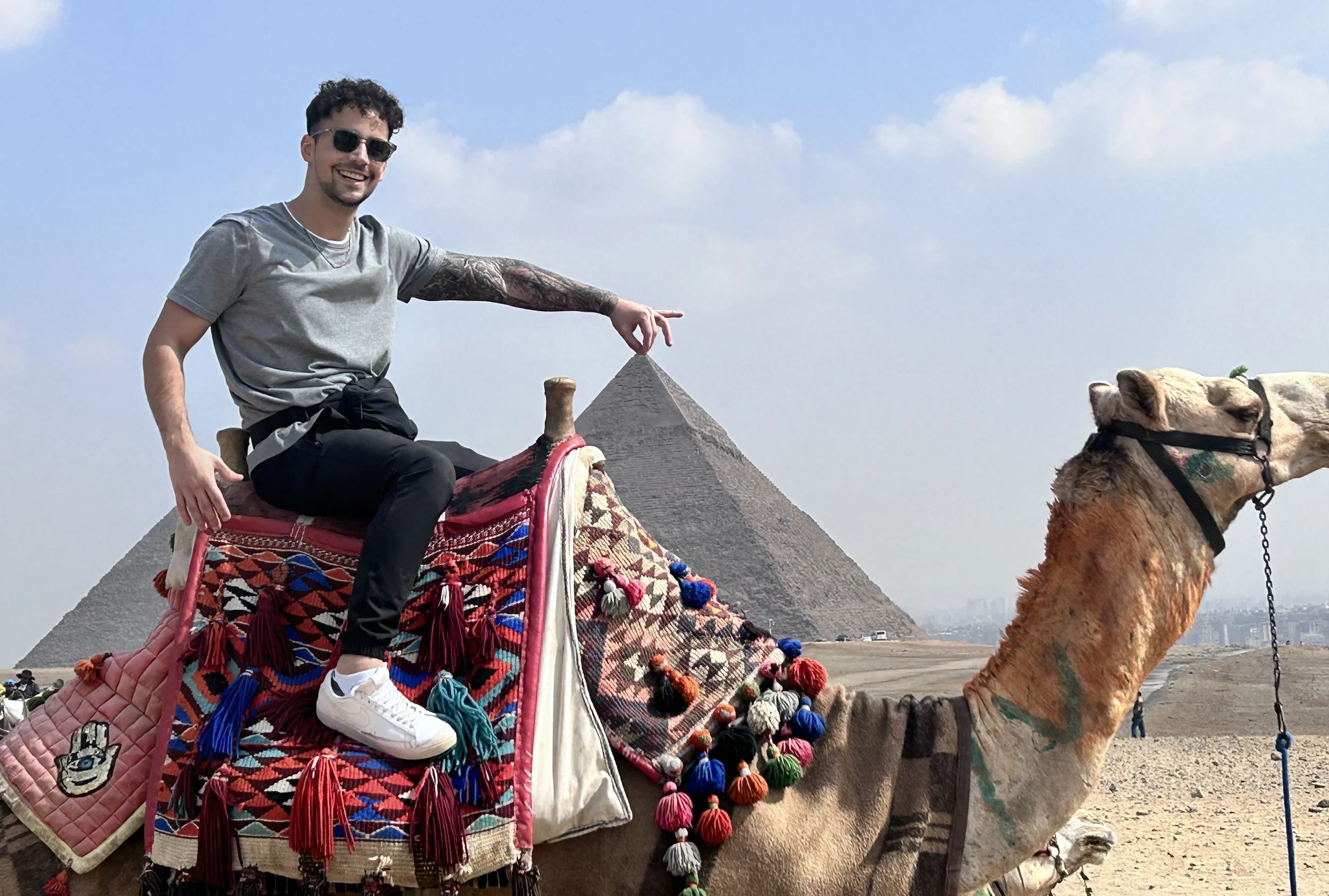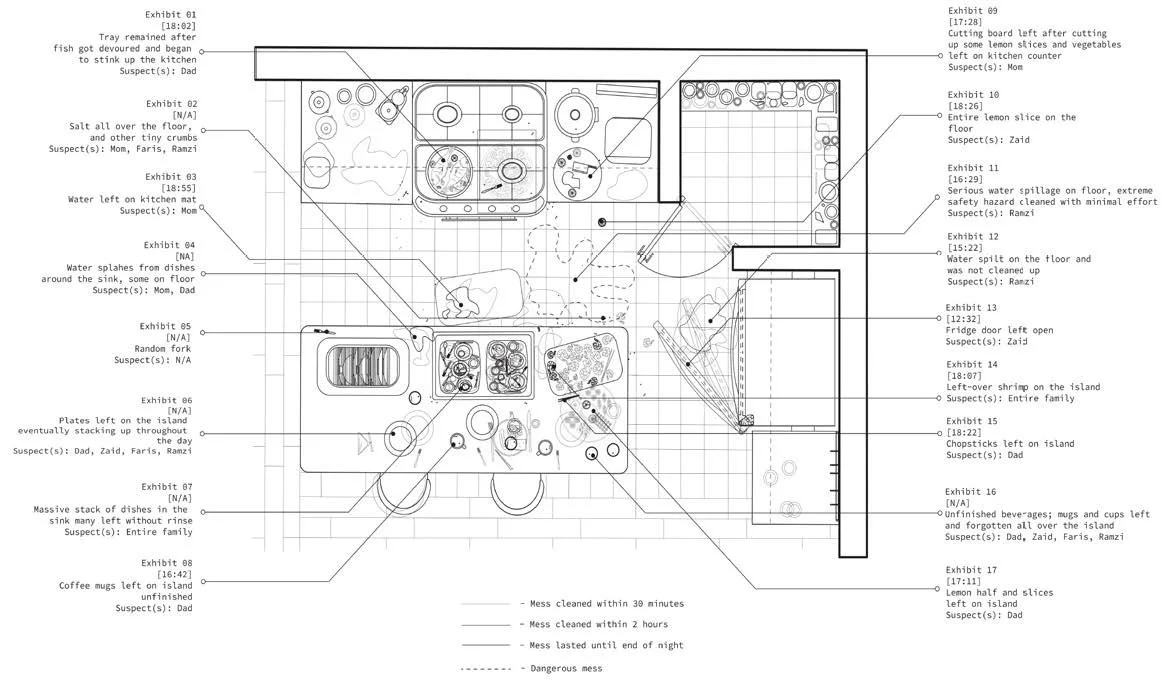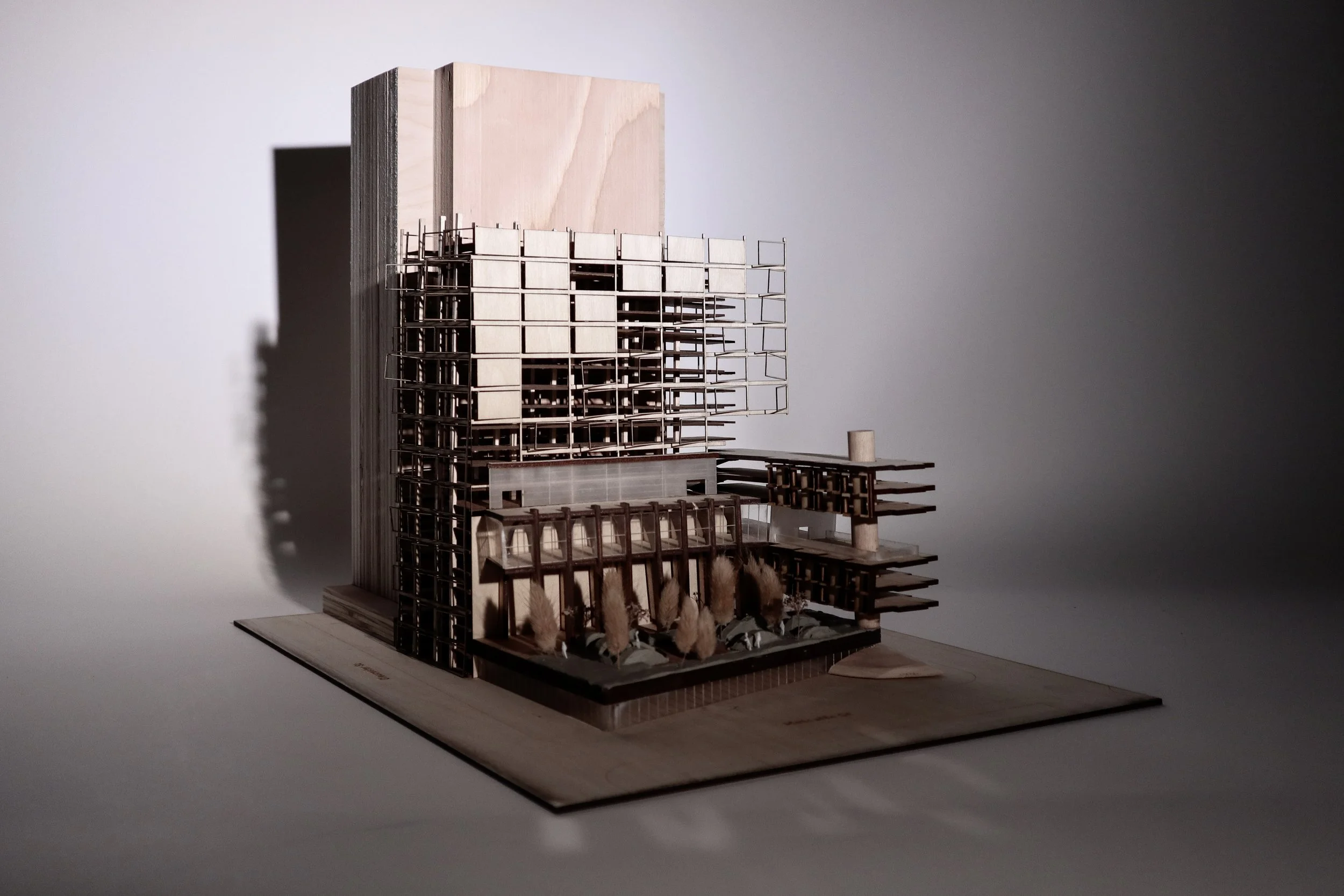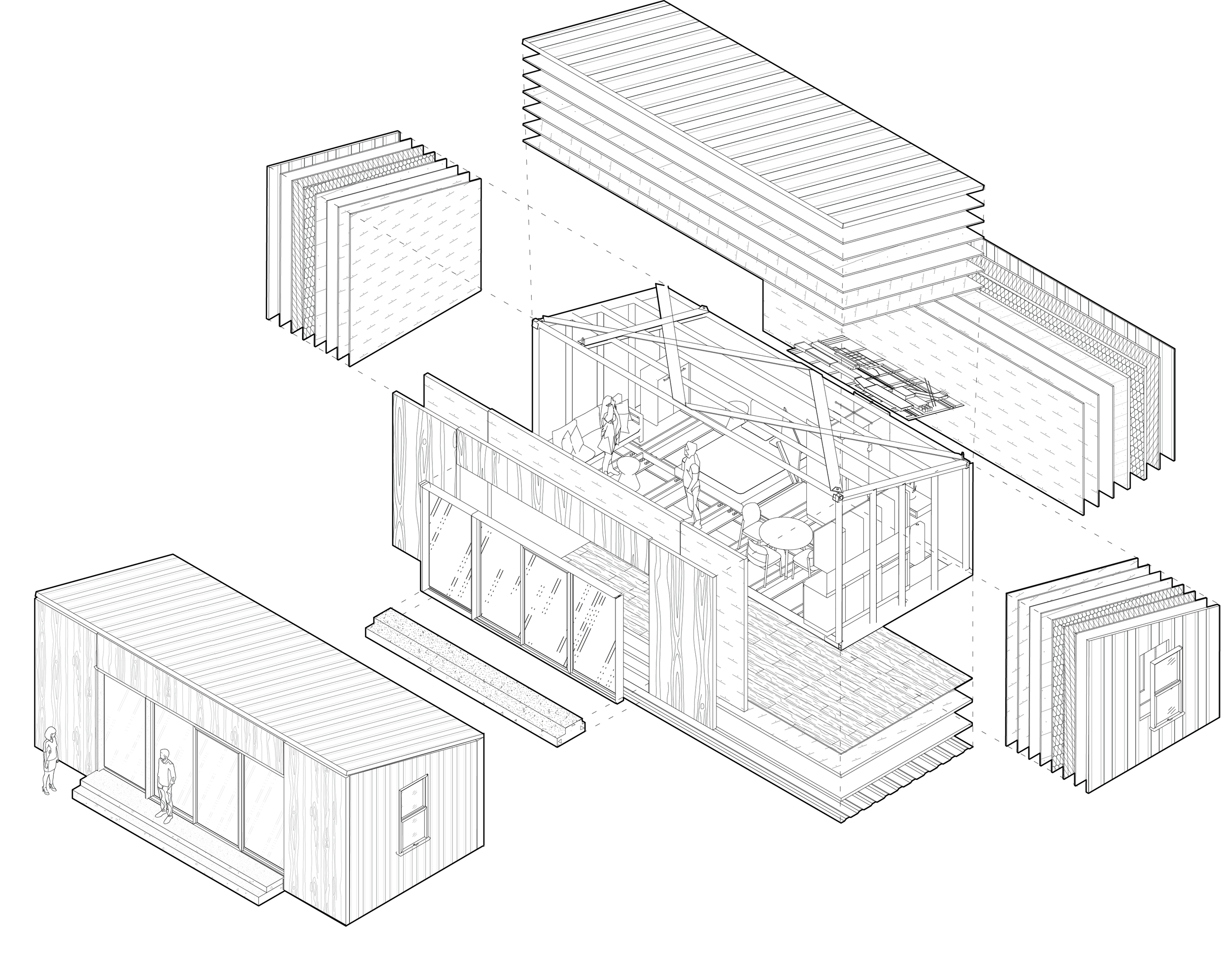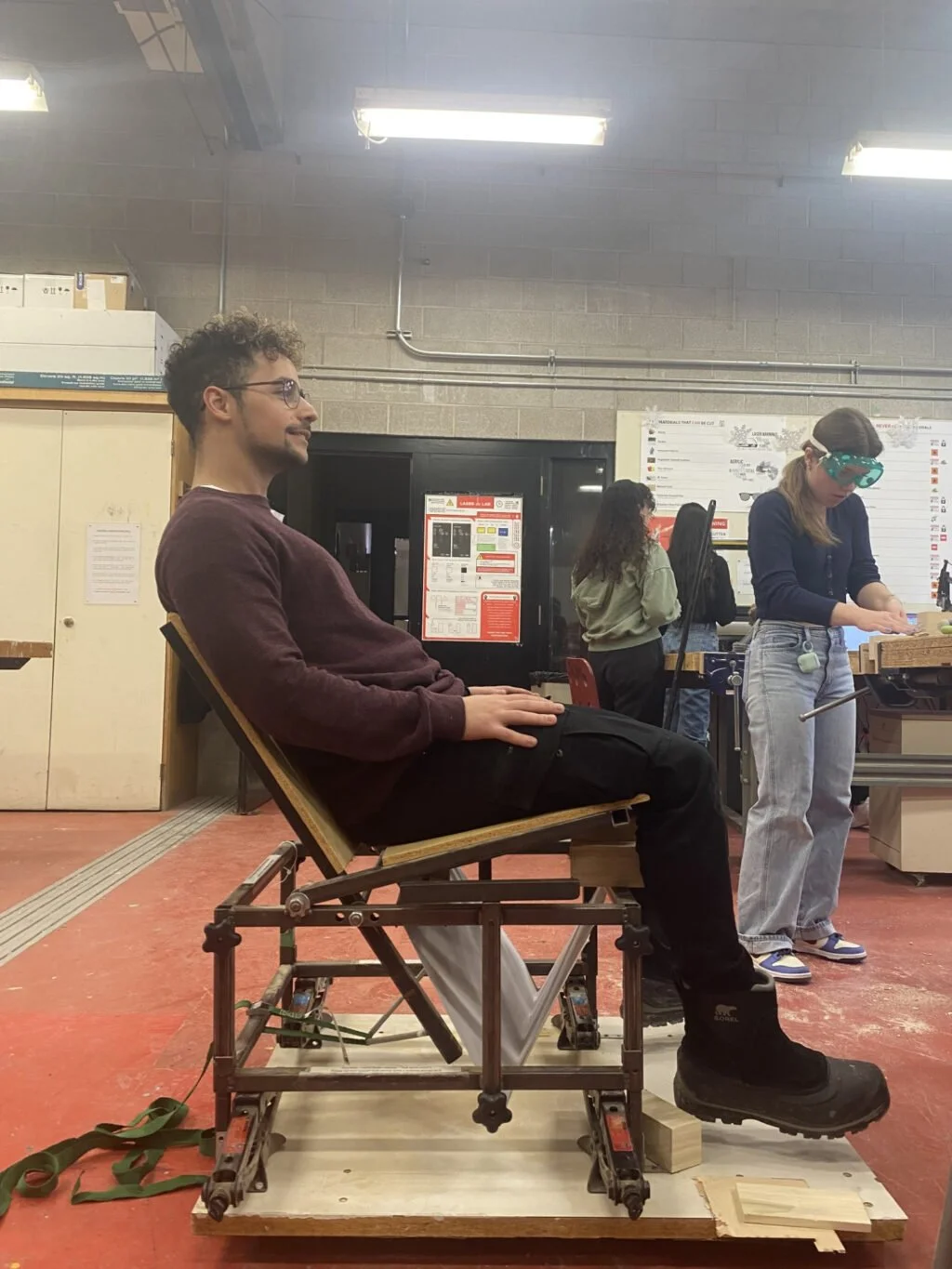A simple question that changed a life: ‘Why not try again?’
Faris Itum knew he was interested in architecture. When he was not accepted into the Bachelor of Architectural Studies program at Carleton University in 2017, he did a degree in History and Theory of Architecture instead.
Itum enjoyed learning about the roots of the discipline and especially gaining the writing and critical skills required. Ultimately, it wasn’t for him. “I wanted to create, rather than just analyze.” A serious injury in 2018 — he was stabbed in the chest during an altercation in the ByWard Market in Ottawa — “forced me to think seriously about what I wanted to do with my life.”
After graduation in 2021, Itum found work at Costco — "a steady job, surrounded by good people, but part of me felt that I had stepped off the path I was meant to be on."
A year later, he had a pivotal conversation with an uncle. “I told him how I’d once been rejected from the design program and decided to move on. He paused and asked, ‘Why not try again for your master’s?’”
Faris Itum travelled to Egypt in 2025 as part of an Option Studio at the Azrieli School of Architecture & Urbanism.
At several schools in Canada, including Carleton, it is possible to obtain a three-year professional Master of Architecture degree if one already has an honours degree in any subject.
Itum remembered hearing about STUDIO FIRST. The summer online course, given by Carleton’s Azrieli School of Architecture & Urbanism, assists potential applicants in developing a strong portfolio and finding out if architecture is for them.
"It felt like the right place to start, so I signed up,” he recalls. “The experience reignited everything I'd been missing — the creativity, the problem-solving, the feeling of building something from the ground up."
By the time he had finished STUDIO FIRST in the summer of 2022, "I knew I wanted to apply for my master’s.”
Itum, 28, was accepted into the three-year Master of Architecture program in 2023. He is now in his final year and working on his thesis. Read more about his journey below.
Faris Itum, of Ottawa, made this drawing in STUDIO FIRST and included it in his M.Arch application portfolio. Kitchen CSI documents the aftermath of big family meals as if they were crime scenes — tracing who left which mess.
Q & A with Faris Itum
How did you get into the History and Theory of Architecture program?
Although I knew I wanted to become an architect, when it came time to apply to university, I did not realize how competitive the undergraduate program was at Carleton. Unfortunately, my application was declined. Carleton University offered an alternative degree in History and Theory of Architecture. I wanted to study something related to architecture, even if it wasn’t design. History and Theory felt like a way to understand the discipline from its roots. It also kept the door open for a master’s in architecture later if I still felt passionate about it after finishing the degree.
What was it like? And what happened?
It was nice to strengthen my reading and writing skills — that’s easily the most valuable thing I gained from my undergraduate degree.
A lot of the historical precedents I studied have faded from memory, but the ability to read critically and write clearly has stayed with me. It was also great to expand my understanding of what architecture is and cover such a wide range of architectural examples across a massive timeline. That broad exposure helped me make sense of all the jargon and references once I arrived for the master’s program.
In 2018, I was stabbed during an altercation on Clarence Street after being jumped by four men. The knife wound was less than an inch from my heart and dangerously close to my lung. I’m grateful I survived — it forced me to slow down and think seriously about what I wanted to do with my life. That moment became a turning point for me.
Drawings from Faris Itum’s M.Arch application portfolio
Left: Second Chance (pencil, paper, marker, and colour pencil) is from a series of works tracing his recovery after a severe chest injury.
Right: Ta’hit Il-Ard is part of a series of digital drawings inspired by David Macaulay’s Underground, imagining a dense subterranean utopia illuminated by artificial light and carved into the terrain like the ancient city of Petra, Jordan.
How did you decide to switch to architecture?
After graduating from the History and Theory of Architecture program, I knew I didn’t want to stay in that world. I wasn’t drawn to the constant reading and writing. Studying precedents was valuable, but I wanted to turn that knowledge into something tangible — to create rather than just analyze. Producing visual art was always something I enjoyed, and that part was missing from the academic side of architecture.
I found work at Costco — a steady job, surrounded by good people — but part of me felt like I’d stepped off the path I was meant to be on.
One day, in a conversation with my uncle, I told him how I’d once been rejected from the design program and decided to move on. He paused and asked, “Why not try again for your master’s?”
It was such a simple question, yet it stayed with me.
I remembered one of my professors mentioning a program called STUDIO FIRST, designed for people looking to strengthen their portfolio and application. It felt like the right place to start, so I signed up. The experience reignited everything I’d been missing — the creativity, the problem-solving, the feeling of building something from the ground up. By the time I finished, I knew I wanted to apply for my master’s.
Converge: A physical model that Faris Itum worked on with fellow student Filipe Costa during Gateway Studio in the second year of the M.Arch program
How was the experience of STUDIO FIRST?
STUDIO FIRST was a very fun and engaging way to learn about architecture in a friendly environment. It helped that everyone there was in the same position — people like me, looking to strengthen their portfolios and take that next step. I met a lot of great people, some of whom are now in my current class, which gives us a special shared history.
STUDIO FIRST also introduced me to several instructors at the architecture school and to current students. Everyone I met was generous with their time, kind to talk to, and full of knowledge, which made learning new things feel less intimidating. By the end of the program, I’d met incredible people, reignited my interest in architecture, and created new work for my portfolio that reflected a different side of me and showcased a wider range of skills.
Why did you choose Carleton?
The schools I was considering were Toronto, UBC, and Carleton. But Carleton made the most sense. It allowed me to stay close to family in Ottawa. I’d also had a positive experience in STUDIO FIRST, which left a strong impression of the school’s community and teaching style.
Faris Itum’s Halo project from Gateway Studio explores incremental building through a modular system of prefabricated housing units. At its centre is the “Halo,” a courtyard that anchors the entire site—named for its circular form and the way all surrounding elements radiate outward from it.
How would you describe your experience of the three-year M.Arch program?
The three-year M.Arch program has been an incredible experience. I’ve learned from professors who are deeply knowledgeable and passionate about what they teach. Each term has introduced new ways of thinking — from social justice and sustainability to how architecture shapes behaviour, memory, and culture. It’s made me realize that architecture is never just about buildings; it’s about people and impact.
What stands out most is how well the program brings everything together — studio work, seminars, travel opportunities, and even employment experiences that tie classroom learning to real practice. The environment is both demanding and supportive, and that combination has pushed me to grow more than I expected.
My classmates have also played a big part in that growth. They come from many different disciplines, which makes discussions and collaborations richer and more dynamic. Altogether, these three years have been full of learning, challenge, and connection — easily some of the best years of my life.
In this assignment, Faris Itum explored a possible modular unit arrangement, designed within the constraints of a particular company’s technology and materials.
What has been one of the most meaningful experiences?
One of the most meaningful experiences was our class trip to Egypt as part of the Option Studio course. Each group of students traveled to a different part of the world to explore a specific topic, and my group chose Egypt, led by Associate Professor Menna Agha — a Nubian architect and scholar.
Menna taught us about the tragic displacement of Nubians caused by the construction of the Aswan High Dam. Through her, we met members of her community and learned from people whose stories are rarely shared. They presented a life and history that would be invisible to most outsiders — knowledge that has been purposefully buried. Experiencing their perspective firsthand changed how I think about architecture and its responsibilities.
The trip was both humbling and inspiring. Menna’s family welcomed us into their homes and took incredible care of us, adding warmth to what was otherwise a heavy subject. It was surreal to be halfway across the world, surrounded by familiar faces, learning about something so complex and human. The trip to Egypt remains one of the most powerful experiences I’ve ever had — one that gave real meaning to the idea that architecture is never separate from the lives it touches.
Faris Itum sketched scenes of Nubian life in Aswan during a school trip to Egypt in February 2025.
What has been the biggest challenge?
STUDIO FIRST introduced me to the basics of the key architectural software — Rhino, Photoshop, Illustrator, and InDesign — but it didn’t fully prepare me to start designing entire buildings right away. That first semester was intense, and the software learning curve was steep.
I overcame it by diving in completely. I spent hours on online tutorials, practiced every day, and leaned on my classmates whenever I got stuck. It helped to know I wasn’t the only one struggling — many of us were figuring it out together, which made the process less intimidating. Over time, those early frustrations turned into confidence.
What’s the best part?
A great part has been seeing my growth from that first year to now, in my thesis. I would have never expected to see myself here — finishing a master’s in architecture. And while I don’t feel like a “master” of the field, I’ve gained a real confidence in my ability to learn new things and adapt quickly.
The best part, however, is the connections I’ve made along the way. The friendships, the professors, and the sense of community that’s built over the years — those will always be the most meaningful part of the experience.
Are you happy you did it?
I’m not just happy I did it — I’m proud of myself for not letting that first rejection hold me back from trying again. I’m also grateful for that conversation with my uncle, because it was the moment that set everything in motion.
Faris Itum was part of a team of Carleton University architecture and engineering students that won third prize in the 2023-2024 Wellness Bench Precast Concrete Student Design Competition for their PineCrete Bench.
Left: Submission poster. Right: Itum tests the bench in the school’s assembly room.
What is the topic of your thesis?
My thesis explores the potential of underutilized wood species and overlooked parts of trees in construction, building on the ideas of my advisor, Assistant Professor Peter Osborne. I’m interested in how architecture can learn from the diversity and adaptability of forest ecosystems — using irregular or lesser-used materials in ways that reduce waste, expand design possibilities, and strengthen the connection between buildings and the ecologies they draw from.
What kind of career do you envision?
After graduation, I’d like to get right into the field and start working toward my architectural license as soon as possible. I don’t have one specific type of architecture I’m set on yet — my interests are still developing — and it’s hard to predict exactly where I’ll be by then. But I know I want to keep learning, stay open to new experiences, and find my direction through practice.
What advice would you give to someone trying to get into architecture from another discipline?
Give it a shot — and don’t be discouraged. Rejection isn’t the end; it can just be part of the path. Focus on creating a portfolio that reflects who you are, not what you think a school wants to see. Embrace the things that make you different — they’ll become your strength once you’re in the program.
